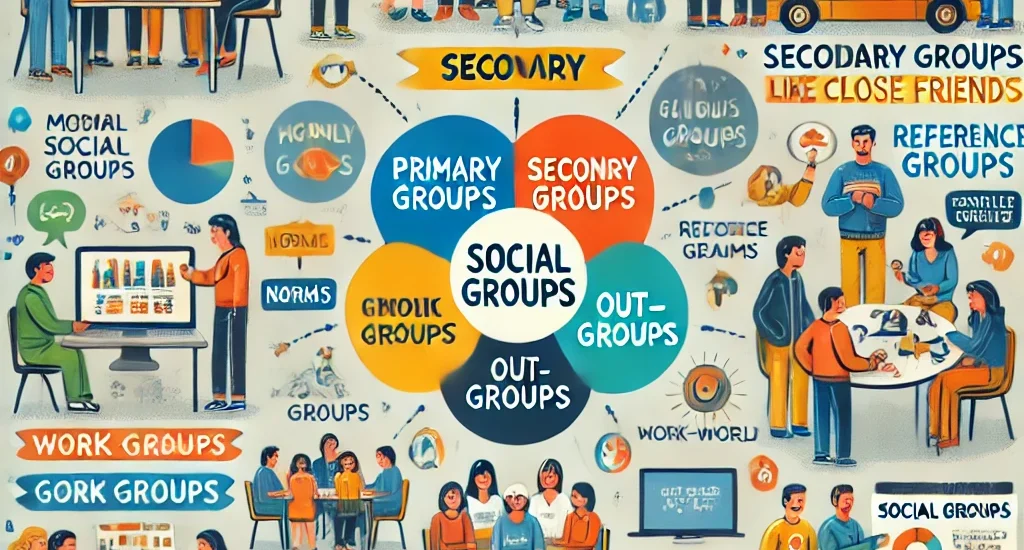What is a Social Group?
A social group refers to two or more individuals who share a common identity, interact with each other, and are influenced by social norms, behaviors, and roles. These groups can range from small, close-knit circles like families to larger, more impersonal entities such as professional organizations or online communities.
Types of Social Groups Social groups can be categorized in several ways:
- Primary Groups: Small, intimate groups where individuals have close, personal relationships, like family and close friends.
- Secondary Groups: Larger, more formal groups where interactions are task-focused, such as work teams or clubs.
- In-Groups and Out-Groups: In-groups refer to groups people feel they belong to, while out-groups are those they do not.
- Reference Groups: Groups that individuals refer to for comparison in shaping their attitudes, beliefs, and behaviors.
Functions of Social Groups
Social groups serve many important functions, including:
- Emotional Support: Providing companionship and encouragement in times of need.
- Socialization: Teaching norms, values, and behaviors necessary for functioning in society.
- Identity Formation: Helping individuals define themselves based on group membership.
- Problem-Solving and Innovation: Collaborating to solve problems and generate new ideas.
Group Dynamics Group dynamics focuses on the behaviors, interactions, and psychological processes that influence how groups operate. This includes:
- Norms: Rules that guide behaviors within the group.
- Roles: Expected behaviors associated with specific positions within the group.
- Cohesion: The sense of unity and solidarity that holds the group together.
- Conflict: Disagreements or tensions that may arise within the group and influence decision-making.
Leadership in Groups
Leadership is crucial in guiding group actions and maintaining cohesion. Different styles of leadership, such as autocratic, democratic, and laissez-faire, impact group performance and dynamics. Effective leaders help navigate conflicts, motivate members, and steer the group toward its goals..
Social Groups in the Digital Age
In today’s digital age, social groups have expanded to include online communities, virtual work teams, and social media networks. Technology allows individuals to form and maintain connections across geographical boundaries, but it also raises concerns about the quality of interactions and the potential for isolation.
Real-World Examples
- Social Movements: Groups like environmental movements or civil rights organizations demonstrate the power of collective action for societal change.
- Work Teams: Professional groups in organizations collaborate to achieve common business objectives, often blending diverse skills and perspectives.
- Subcultures: Groups like fandoms or urban tribes have their own distinct norms, values, and behaviors that differentiate them from mainstream society.
Conclusion
Social groups play an essential role in shaping our behaviors, identities, and relationships. They provide support, foster growth, and can influence broader societal change. As our world continues to evolve with digital advancements, the nature and function of social groups will undoubtedly transform, creating new opportunities and challenges for social interaction.






